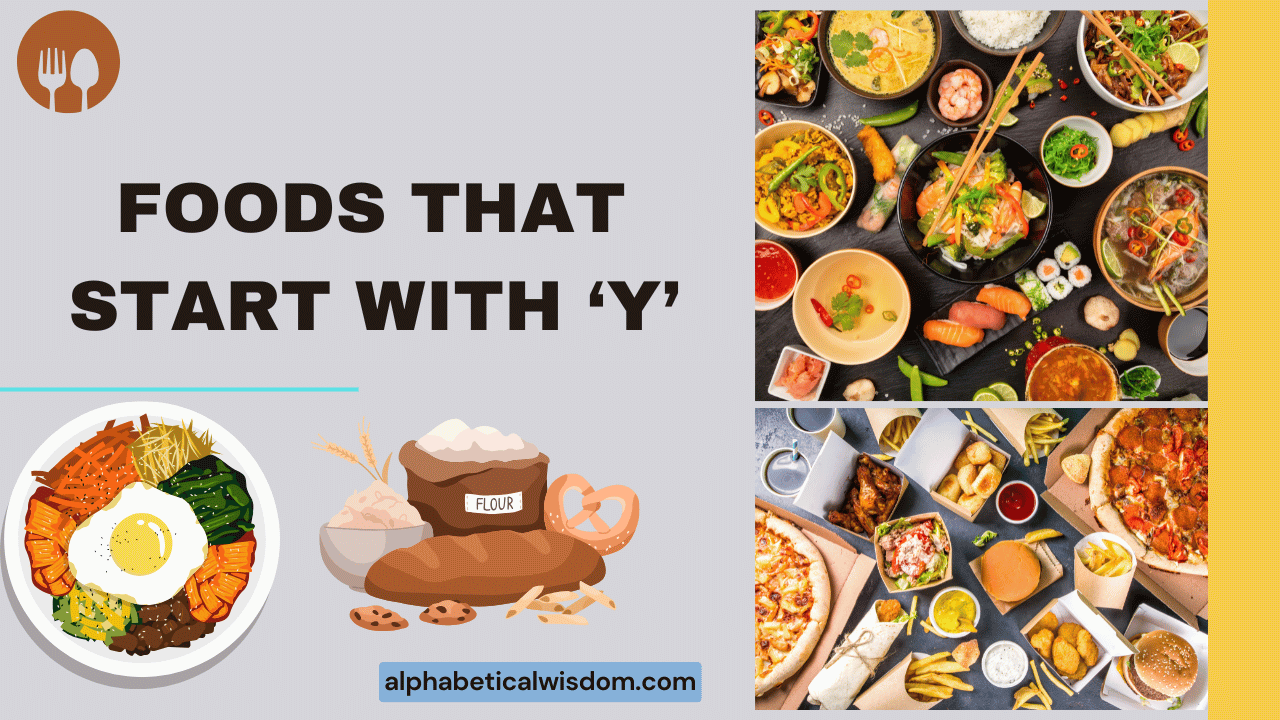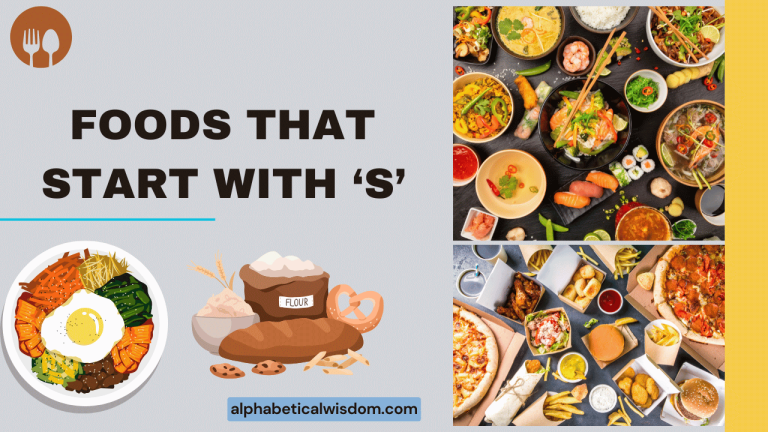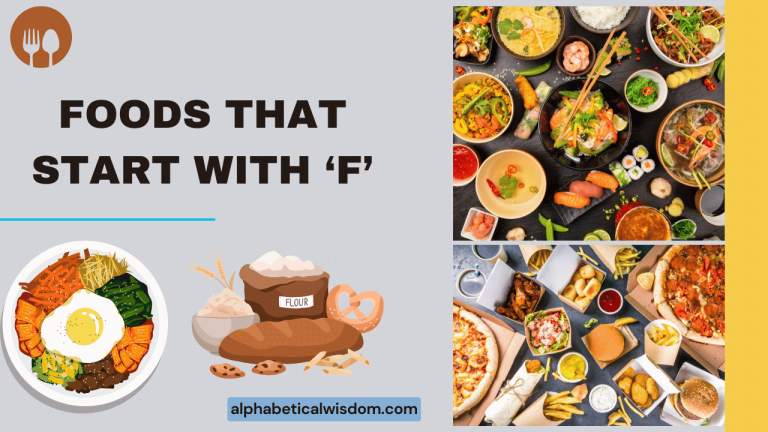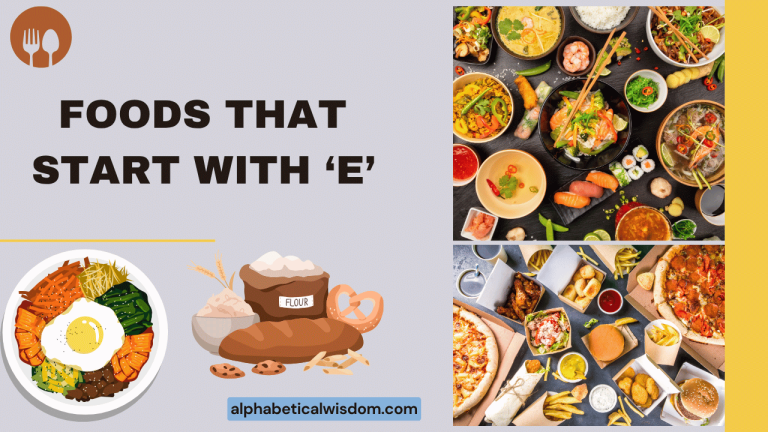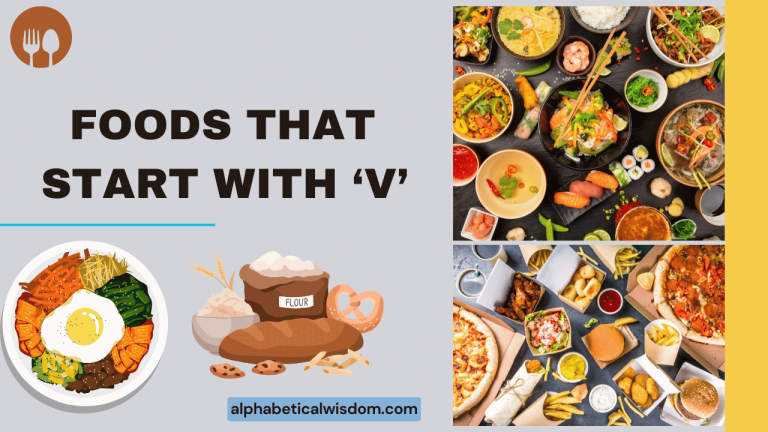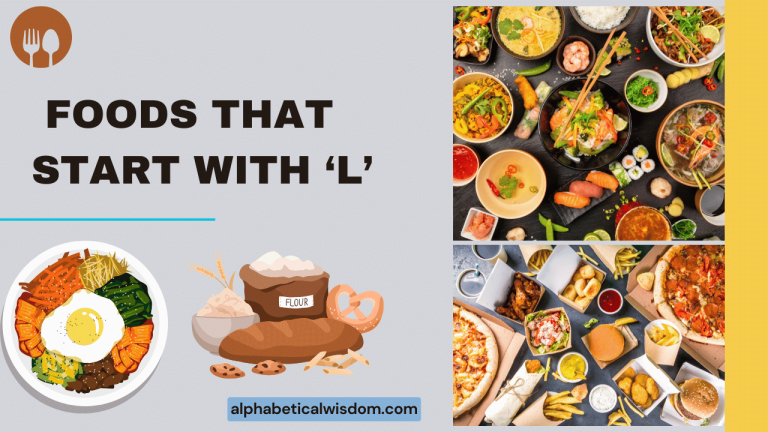Foods That Start With Y: A Grammatical Exploration
Exploring foods that start with the letter “Y” offers a unique lens through which to examine English grammar. This seemingly simple topic allows us to delve into noun types, countable and uncountable nouns, articles, and the nuances of pluralization.
Understanding these grammatical principles in the context of food vocabulary can make learning more engaging and memorable. This guide will benefit English language learners of all levels, from beginners expanding their vocabulary to advanced speakers refining their grammatical accuracy.
Table of Contents
- Introduction
- Definition: Foods That Start With Y
- Structural Breakdown: Nouns and Articles
- Types and Categories of Food Nouns
- Examples: Foods That Start With Y in Sentences
- Usage Rules: Articles and Quantifiers
- Common Mistakes
- Practice Exercises
- Advanced Topics: Idioms and Collocations
- FAQ: Frequently Asked Questions
- Conclusion
Definition: Foods That Start With Y
The phrase “foods that start with Y” refers to edible substances whose names begin with the letter “Y.” These foods, like all nouns, can be categorized as countable or uncountable, singular or plural, and require the correct usage of articles (a, an, the) or quantifiers (some, any, much, many) depending on the context. Understanding these grammatical aspects is crucial for accurate and effective communication in English.
From a grammatical perspective, identifying foods starting with “Y” allows us to practice applying various rules and conventions related to nouns. For instance, we can explore how to use articles with these nouns, determine whether they are countable or uncountable, and understand their plural forms.
The exercise of identifying and categorizing these foods reinforces fundamental grammar concepts.
Structural Breakdown: Nouns and Articles
In English grammar, nouns are words that represent people, places, things, or ideas. Foods, naturally, fall under the category of ‘things’. When discussing foods that start with “Y,” we primarily deal with common nouns (general names of things) rather than proper nouns (specific names, which are capitalized). These nouns can be either countable (can be counted individually) or uncountable (cannot be counted individually and are treated as a mass or substance). The choice of article (a, an, the) or quantifier (some, any, much, many) depends on whether the noun is countable or uncountable and whether it is specific or general.
Articles are words used to define whether a noun is specific or unspecific. “A” and “an” are indefinite articles, used when referring to a non-specific or generic noun. “The” is a definite article, used when referring to a specific noun that has already been mentioned or is known to the listener/reader. For example, “I ate a yam” (unspecified yam) vs. “I ate the yam you gave me” (specific yam). The correct usage of articles is crucial for clarity and grammatical accuracy.
Types and Categories of Food Nouns
Countable vs. Uncountable
Countable nouns are those that can be counted and have singular and plural forms. For example, “apple” is countable; we can have “one apple,” “two apples,” etc. Uncountable nouns, also known as mass nouns, are those that cannot be counted and typically do not have a plural form. Examples include “rice,” “water,” and “sugar.” When dealing with uncountable nouns, we often use quantifiers to express quantity (e.g., “some rice,” “much water”).
Foods starting with “Y” can be either countable or uncountable. For instance, “yam” is generally countable (one yam, two yams), while a dish made from yams might be described using uncountable nouns to describe its components or consistency.
Recognizing the difference between countable and uncountable nouns is essential for using correct grammar, particularly regarding articles and quantifiers. The table below illustrates the difference with more examples.
| Category | Example Noun | Countable/Uncountable | Explanation |
|---|---|---|---|
| Food starting with Y | Yam | Countable | You can have one yam, two yams, etc. |
| Food starting with Y | Yogurt | Uncountable (can be countable when referring to individual servings) | Generally, “yogurt” is uncountable, but “a yogurt” can refer to a serving. |
| Other Food | Apple | Countable | You can have one apple, two apples, etc. |
| Other Food | Water | Uncountable | You can’t say “one water,” but you can say “a glass of water.” |
Singular vs. Plural
Singular nouns refer to one item, while plural nouns refer to more than one. Most singular nouns become plural by adding “-s” or “-es” to the end. However, some nouns have irregular plural forms (e.g., “child” becomes “children”). Understanding how to form plurals correctly is a fundamental aspect of English grammar.
When discussing foods that start with “Y,” paying attention to singular and plural forms is important. For example, “yam” (singular) becomes “yams” (plural).
Note that uncountable nouns generally do not have a plural form. The correct usage of singular and plural forms ensures clarity and grammatical accuracy in writing and speaking.
Examples: Foods That Start With Y in Sentences
General Examples
Here are some example sentences using foods that start with “Y,” illustrating various grammatical concepts. These examples show how nouns are used in different contexts, including with articles and quantifiers.
| Sentence | Grammatical Feature | Explanation |
|---|---|---|
| I ate a yam for dinner. | Countable noun with indefinite article | “Yam” is countable, so it takes the article “a.” |
| She enjoys yogurt with her breakfast. | Uncountable noun | “Yogurt” is generally uncountable. |
| We bought yams at the market. | Plural countable noun | “Yams” is the plural form of “yam.” |
| The chef used yuzu in the sauce. | Noun in a specific context | “Yuzu” is used as an ingredient. |
| Would you like some yakitori? | Uncountable noun with quantifier | “Yakitori” (referring to the meat) is treated as uncountable, using “some.” |
| He ordered a yogurt parfait. | Countable use of yogurt | “Yogurt parfait” is a specific dish, making “yogurt” countable in this context. |
| There are several varieties of yams grown in the region. | Plural countable noun | “Varieties” is plural, emphasizing the different types of yams. |
| The yuzu fruit has a unique aroma. | Singular countable noun | “Yuzu fruit” refers to a specific type of fruit. |
| She added a dollop of yogurt to her smoothie. | Countable use of yogurt | “A dollop” makes “yogurt” countable by specifying a quantity. |
| They served yakisoba at the festival. | Uncountable noun | “Yakisoba” (referring to the dish) is treated as uncountable. |
| I prefer the taste of yellowtail sashimi. | Uncountable noun | “Yellowtail sashimi” (referring to the dish) is treated as uncountable. |
| He grows his own yams in his garden. | Plural countable noun | “Yams” is the plural form of “yam.” |
| The recipe calls for a cup of yogurt. | Countable use of yogurt | “A cup” makes “yogurt” countable by specifying a quantity. |
| We tried yuca fries at the restaurant. | Plural countable noun | “Yuca fries” is plural, referring to multiple pieces. |
| She sprinkled some yeast on the dough. | Uncountable noun | “Yeast” is generally uncountable. |
| He is allergic to yellow dye in food. | Uncountable noun | “Yellow dye” is treated as uncountable. |
| The baker used a block of yeast for the bread. | Countable use of yeast | “A block” makes “yeast” countable by specifying a quantity. |
| I added a slice of yellow cheese to my sandwich. | Countable use of cheese | “A slice” makes “cheese” countable by specifying a quantity. |
| They sell various types of yogurt at the store. | Plural countable noun | “Types” is plural, referring to different kinds of yogurt. |
| She enjoys a yogurt drink after her workout. | Countable use of yogurt | “A yogurt drink” is a specific item, making “yogurt” countable in this context. |
| We ordered some yellowfin tuna for sushi. | Uncountable noun | “Yellowfin tuna” (referring to the fish) is treated as uncountable. |
| The farmer harvested many yams this season. | Plural countable noun | “Yams” is the plural form of “yam.” |
| She uses a lot of yogurt in her cooking. | Uncountable noun | “Yogurt” is generally uncountable. |
| He bought a package of yeast for baking. | Countable use of yeast | “A package” makes “yeast” countable by specifying a quantity. |
Countable Noun Examples
This table focuses on countable nouns that start with “Y,” illustrating their usage in sentences with appropriate articles and plural forms.
| Sentence | Noun | Article/Plural | Explanation |
|---|---|---|---|
| I need to buy a yam for the stew. | Yam | A | Singular, indefinite article “a” used. |
| The yams in the garden are growing well. | Yams | Plural | Plural form of “yam.” |
| She added a yuzu to the salad. | Yuzu | A | Singular, indefinite article “a” used. |
| I bought three yams at the store. | Yams | Plural | Plural form of “yam” used with a specific number. |
| He sliced a yuzu for the cocktail. | Yuzu | A | Singular, indefinite article “a” used. |
| There are many types of yams. | Yams | Plural | Plural form of “yam” used to indicate variety. |
| She planted a yam seed in the pot. | Yam | A | Singular, indefinite article “a” used. |
| The farmer harvested several yams. | Yams | Plural | Plural form of “yam” used to indicate quantity. |
| I found a yellow squash at the market. | Squash | A | Singular, indefinite article “a” used. |
| The yellow squashes were on sale. | Squashes | Plural | Plural form of “squash” used. |
| He bought a yellow pepper for the salsa. | Pepper | A | Singular, indefinite article “a” used. |
| The yellow peppers are very spicy. | Peppers | Plural | Plural form of “pepper” used. |
| She ate a yellow plum for dessert. | Plum | A | Singular, indefinite article “a” used. |
| The yellow plums were very sweet. | Plums | Plural | Plural form of “plum” used. |
| I saw a yellow apple at the orchard. | Apple | A | Singular, indefinite article “a” used. |
| The yellow apples were ripe. | Apples | Plural | Plural form of “apple” used. |
| He picked a yellow tomato from the vine. | Tomato | A | Singular, indefinite article “a” used. |
| The yellow tomatoes were used for the salad. | Tomatoes | Plural | Plural form of “tomato” used. |
| She found a yellow bell pepper at the store. | Pepper | A | Singular, indefinite article “a” used. |
| The yellow bell peppers were on display. | Peppers | Plural | Plural form of “pepper” used. |
| I added a yellow onion to the soup. | Onion | A | Singular, indefinite article “a” used. |
| The yellow onions are very strong. | Onions | Plural | Plural form of “onion” used. |
| He baked a yellow corn muffin for breakfast. | Muffin | A | Singular, indefinite article “a” used. |
| The yellow corn muffins were delicious. | Muffins | Plural | Plural form of “muffin” used. |
Uncountable Noun Examples
This table focuses on uncountable nouns related to foods that start with “Y,” illustrating their usage in sentences with appropriate quantifiers.
| Sentence | Noun | Quantifier | Explanation |
|---|---|---|---|
| She added some yogurt to her smoothie. | Yogurt | Some | “Yogurt” is uncountable, so “some” is used. |
| Do you want any yakitori? | Yakitori | Any | “Yakitori” (referring to the meat) is uncountable, so “any” is used in a question. |
| There is a lot of yellow dye in that candy. | Yellow dye | A lot of | “Yellow dye” is uncountable, so “a lot of” is used. |
| We need more yeast for the bread. | Yeast | More | “Yeast” is uncountable, so “more” is used. |
| He used a bit of yuzu juice in the marinade. | Yuzu juice | A bit of | “Yuzu juice” is uncountable, so “a bit of” is used. |
| She prefers low-fat yogurt. | Yogurt | (No quantifier) | “Yogurt” is uncountable, used generally. |
| They served some yellow rice at the party. | Yellow rice | Some | “Yellow rice” is uncountable, so “some” is used. |
| I need a pinch of yellow mustard for the hot dog. | Yellow mustard | A pinch of | “Yellow mustard” is uncountable, so “a pinch of” is used. |
| He added a dash of yellow food coloring to the cake. | Yellow food coloring | A dash of | “Yellow food coloring” is uncountable, so “a dash of” is used. |
| She used a sprinkle of yellow turmeric in the curry. | Yellow turmeric | A sprinkle of | “Yellow turmeric” is uncountable, so “a sprinkle of” is used. |
| I want a spoonful of yogurt. | Yogurt | A spoonful of | “Yogurt” is uncountable, but made countable with “a spoonful of.” |
| He drinks a glass of yogurt every morning. | Yogurt | A glass of | “Yogurt” is uncountable, but made countable with “a glass of.” |
| She wants a tub of yogurt for the week. | Yogurt | A tub of | “Yogurt” is uncountable, but made countable with “a tub of.” |
| I need a package of yeast for the bread. | Yeast | A package of | “Yeast” is uncountable, but made countable with “a package of.” |
| He bought a loaf of yellow corn bread. | Yellow corn bread | A loaf of | “Yellow corn bread” is uncountable, but made countable with “a loaf of.” |
Plural Noun Examples
This table provides examples of food nouns starting with Y in their plural form, used in sentences that showcase their correct grammatical usage.
| Sentence | Plural Noun | Explanation |
|---|---|---|
| We bought several yams at the farmers market. | Yams | Plural form of “yam.” |
| The chef used various yuzus in his experimental dishes. | Yuzus | Plural form of “yuzu.” |
| They harvested the yams. | Yams | Plural form of “yam.” |
| These yuzus are very fragrant. | Yuzus | Plural form of “yuzu.” |
| The children ate the yellow plums. | Plums | Plural form of “plum.” |
| She peeled the yellow onions for the soup. | Onions | Plural form of “onion.” |
| The farmers grew yellow squashes. | Squashes | Plural form of “squash.” |
| He picked the yellow apples from the tree. | Apples | Plural form of “apple.” |
| We bought the yellow peppers for the salad. | Peppers | Plural form of “pepper.” |
| The baker sold yellow corn muffins. | Muffins | Plural form of “muffin.” |
| She cooked the yellow tomatoes. | Tomatoes | Plural form of “tomato.” |
| They served the yellow bell peppers. | Peppers | Plural form of “pepper.” |
| I ate the yellow berries. | Berries | Plural form of “berry.” |
| He bought the yellow mangoes. | Mangoes | Plural form of “mango.” |
| She saw the yellow bananas. | Bananas | Plural form of “banana.” |
| They tasted the yellow pears. | Pears | Plural form of “pear.” |
| We found the yellow peaches. | Peaches | Plural form of “peach.” |
| The kids loved the yellow candies. | Candies | Plural form of “candy.” |
| She enjoyed the yellow cookies. | Cookies | Plural form of “cookie.” |
| He shared the yellow crackers. | Crackers | Plural form of “cracker.” |
Article Usage Examples
This table demonstrates the correct usage of articles (a, an, the) with food nouns starting with “Y” in various sentence contexts.
| Sentence | Article | Noun | Explanation |
|---|---|---|---|
| I want to buy a yam. | A | Yam | Indefinite article “a” used for a general yam. |
| The yam I bought was very sweet. | The | Yam | Definite article “the” used for a specific yam. |
| She added a yuzu to the dish. | A | Yuzu | Indefinite article “a” used for a general yuzu. |
| The yuzu gave the sauce a unique flavor. | The | Yuzu | Definite article “the” used for a specific yuzu. |
| He needs a yellow pepper for the recipe. | A | Yellow pepper | Indefinite article “a” used for a general yellow pepper. |
| The yellow pepper was very spicy. | The | Yellow pepper | Definite article “the” used for a specific yellow pepper. |
| She ate a yellow plum. | A | Yellow plum | Indefinite article “a” used for a general yellow plum. |
| The yellow plum was ripe. | The | Yellow plum | Definite article “the” used for a specific yellow plum. |
| I bought a yellow apple. | A | Yellow apple | Indefinite article “a” used for a general yellow apple. |
| The yellow apple was delicious. | The | Yellow apple | Definite article “the” used for a specific yellow apple. |
| He picked a yellow tomato. | A | Yellow tomato | Indefinite article “a” used for a general yellow tomato. |
| The yellow tomato was used in the salad. | The | Yellow tomato | Definite article “the” used for a specific yellow tomato. |
| She found a yellow bell pepper. | A | Yellow bell pepper | Indefinite article “a” used for a general yellow bell pepper. |
| The yellow bell pepper was on sale. | The | Yellow bell pepper | Definite article “the” used for a specific yellow bell pepper. |
| I added a yellow onion. | A | Yellow onion | Indefinite article “a” used for a general yellow onion. |
| The yellow onion was very strong. | The | Yellow onion | Definite article “the” used for a specific yellow onion. |
| He baked a yellow corn muffin. | A | Yellow corn muffin | Indefinite article “a” used for a general yellow corn muffin. |
| The yellow corn muffin was tasty. | The | Yellow corn muffin | Definite article “the” used for a specific yellow corn muffin. |
Usage Rules: Articles and Quantifiers
Rules for Using Articles (a, an, the)
The choice between “a,” “an,” and “the” depends on the noun’s specificity and whether it is being introduced for the first time. Use “a” before singular, countable nouns that begin with a consonant sound (e.g., “a yam”).
Use “an” before singular, countable nouns that begin with a vowel sound (e.g., “an apple,” even if the word starts with a consonant but has a vowel sound, like “an hour”). Use “the” when referring to a specific noun that has already been mentioned or is known to the listener/reader (e.g., “the yam I ate yesterday”).
Additionally, remember that uncountable nouns generally do not take “a” or “an.” Instead, use quantifiers like “some,” “much,” or “a lot of” (e.g., “some yogurt,” “much yellow dye”). The correct application of these rules ensures grammatical accuracy and clarity in communication.
Rules for Using Quantifiers (some, any, much, many)
Quantifiers are words that indicate quantity. “Some” is used with uncountable nouns and plural countable nouns in affirmative sentences (e.g., “some yogurt,” “some yams”). “Any” is used with uncountable nouns and plural countable nouns in questions and negative sentences (e.g., “Do you have any yogurt?” “I don’t have any yams”). “Much” is used with uncountable nouns (e.g., “much yogurt”), while “many” is used with plural countable nouns (e.g., “many yams”).
For expressing quantity in a more specific manner, use expressions like “a lot of,” “a little,” “a few,” or measurements such as “a cup of,” “a spoonful of,” etc. These quantifiers help to provide a more precise indication of the amount or quantity of the food being discussed.
Using quantifiers correctly is essential for accurately conveying information about amounts and quantities.
Common Mistakes
One common mistake is using “a” or “an” with uncountable nouns. For example, saying “I want a yogurt” is incorrect; instead, say “I want some yogurt” or “I want a cup of yogurt.” Another mistake is using “much” with countable nouns.
For example, saying “I have much yams” is incorrect; instead, say “I have many yams.”
Another frequent error involves incorrect pluralization. For example, using “yoghurt” as a plural is incorrect because “yogurt” is generally uncountable.
Instead, refer to “types of yogurt” or “servings of yogurt.” Paying attention to these common mistakes and practicing the correct usage can significantly improve grammatical accuracy.
| Incorrect | Correct | Explanation |
|---|---|---|
| I want a yogurt. | I want some yogurt. | “Yogurt” is uncountable, so it doesn’t take “a.” |
| I have much yams. | I have many yams. | “Yams” is countable, so it takes “many.” |
| Can I have a yakitori? | Can I have some yakitori? | “Yakitori” (referring to the meat) is uncountable, so it doesn’t take “a.” |
| I need a yeast. | I need some yeast. | “Yeast” is uncountable, so it doesn’t take “a.” |
Practice Exercises
Exercise 1: Article Usage
Fill in the blanks with the correct article (a, an, the) or leave blank if no article is needed.
| Question | Answer |
|---|---|
| I ate _____ yam for dinner. | a |
| _____ yogurt I had this morning was delicious. | The |
| She needs _____ yellow pepper for the recipe. | a |
| He bought _____ yuzu from the store. | a |
| _____ yellow dye in the candy is artificial. | The |
| I want to try _____ yakitori. | (no article) |
| She found _____ yellow apple at the market. | a |
| _____ yeast is an important ingredient for bread. | (no article) |
| He ate _____ yellow plum for dessert. | a |
| _____ yellowfin tuna is a popular choice for sushi. | (no article) |
Exercise 2: Countable vs. Uncountable
Identify whether the following nouns are countable (C) or uncountable (U).
| Noun | Answer |
|---|---|
| Yam | C |
| Yogurt | U |
| Yuzu | C |
| Yellow dye | U |
| Yakitori | U |
| Yeast | U |
| Yellow pepper | C |
| Yellow plum | C |
| Yellow apple | C |
| Yellowfin tuna | U |
Exercise 3: Pluralization
Provide the plural form of the following nouns.
| Singular Noun | Plural Noun |
|---|---|
| Yam | Yams |
| Yuzu | Yuzus |
| Yellow pepper | Yellow peppers |
| Yellow plum | Yellow plums |
| Yellow apple | Yellow apples |
Advanced Topics: Idioms and Collocations
Exploring idioms and collocations related to food can significantly enhance one’s understanding of English. However, foods starting with the letter “Y” are not commonly featured in many well-known idioms.
Nonetheless, understanding how food-related idioms and collocations work can be beneficial. For example, the idiom “a piece of cake” (meaning something is easy) is a common food-related expression.
Here are a few examples of general food-related idioms and collocations:
- “To have a sweet tooth”: To enjoy sugary foods.
- “To eat like a horse”: To eat a lot.
- “To be full of beans”: To be energetic and lively.
- “To go bananas”: To become crazy or very excited.
While direct idioms with “yam” or “yogurt” are rare, understanding the structure and usage of these common phrases can help in comprehending more complex language constructs. Recognizing and using idioms and collocations correctly can make your English sound more natural and fluent.
FAQ: Frequently Asked Questions
Can “yogurt” be countable in some contexts?
Yes, “yogurt” is generally uncountable, but it can be countable when referring to individual servings or types. For example, “I bought three yogurts” (referring to individual containers) or “There are many types of yogurt available.”
How do I use articles with food names that start with “Y”?
Use “a” or “an” with singular, countable nouns when introducing them for the first time (e.g., “I ate a yam”). Use “the” when referring to a specific noun that has already been mentioned or is known to the listener/reader (e.g., “The yam I ate was delicious”).
Uncountable nouns generally do not take “a” or “an” (e.g., “I like yogurt”).
What quantifiers should I use with uncountable food nouns starting with “Y”?
Use quantifiers like “some,” “any,” “much,” “a lot of,” “a little,” or measurements such as “a cup of,” “a spoonful of,” etc. (e.g., “some yogurt,” “much yellow dye,” “a cup of yogurt”).
Are there any irregular plural forms for foods starting with “Y”?
No, most food names starting with “Y” follow regular pluralization rules (adding “-s” to the end of the word). However, it’s important to remember that uncountable nouns do not have a plural form.
Why is it important to understand countable and uncountable nouns?
Understanding countable and uncountable nouns is crucial for using correct grammar, particularly regarding articles and quantifiers. Using the wrong article or quantifier can lead to confusion and grammatical errors.
Conclusion
Exploring foods that start with the letter “Y” provides a practical and engaging way to reinforce English grammar concepts. By understanding the nuances of countable and uncountable nouns, article usage, pluralization, and quantifiers, English language learners can improve their accuracy and fluency.
While specific idioms and collocations may be limited, the principles learned through this exercise are broadly applicable to other areas of vocabulary and grammar. Consistent practice and attention to detail will help learners master these concepts and communicate more effectively.
